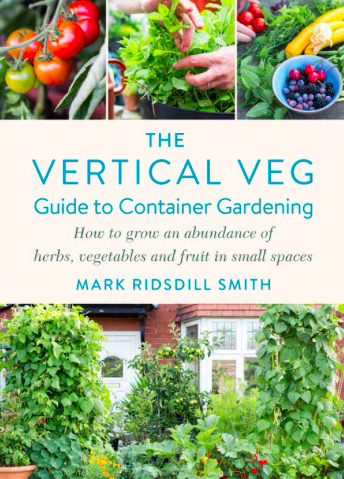by Sarah Cossom
 After I read this book I went straight out to sort out my wormery*. It’s that kind of book - one that inspires you to garden just that little bit better, regardless of the level you’re at.
After I read this book I went straight out to sort out my wormery*. It’s that kind of book - one that inspires you to garden just that little bit better, regardless of the level you’re at.
There’s a lot to be said about creating your own green, edible oasis in the city (or anywhere, for that matter) and as a result, there’s a great deal of information and detail crammed into these pages. But don’t let that put you off - it’s very digestible and the different sections can be easily dipped in and out of, depending on your level of expertise and interest.
If you’ve never grown anything, then this book will demystify the process and make growing your own food really accessible, particularly the ‘eight steps to success’ section. For those with a little more experience, this is a great manual for how to create your own abundant and productive edible container garden. It can also be used to help inspire people to take it that little bit further, with practical ideas on how to expand growing in containers out into the wider community.
One of Mark’s aims with this book is to share the joy he gets from not only growing his own food in a small space, but also how this small act has much wider benefits, both for himself and his local community. He’s not exaggerating when he says it literally has ‘the potential to change lives and build communities’; he’s seen this with his own eyes, initially in London and now in his home in Newcastle, North East England. As a result, he vowed to devote his life to inspiring and supporting small-scale food growing.
This book taps into the increasingly important issue of food security, and how we would all benefit from growing our own food, however small scale. It shows how it’s possible to grow 5-15% of a household’s food in a very small space (such as a balcony or patio) by planting salad leaves, herbs and soft fruit etc. In one year, Mark’s NW facing balcony in London boasted an impressive 83.4kg (184 lb) of food worth around £899. This included tomatoes, potatoes, salads, squash, herbs and courgettes.
Mark’s diligent record keeping means he’s done all the hard work for you in terms of the right pot sizes, compost, soil, feeding regimes etc. for your situation. When he started in 2009, he openly admits he had no idea what he was doing, and the preceding years of what he learnt through trial and error are all meticulously documented in this book.
There’s an excellent section devoted to microgreens, for example, which includes everything from how to grow them cheaply to difficulty ratings for each different option. Mark offers workable solutions to some of the common challenges of growing in containers such as space, cost, tools and watering, making it feel extremely do-able for even a novice gardener.
I can relate to being a stranger in a new place, not sure where I could fit in. As Mark has done, I used gardening as a way to ease myself in and set up a community garden where I could share my love of growing food with others. I know so many more people from all walks of life as a result, and it has opened up doors I never thought possible.
So if you take only one thing away from reading The Vertical Veg Guide to Container Gardening, let it be about the power of growing communities to bring about positive change. After all, permaculture is a revolution disguised as gardening!
Find out more about Mark on his website.
*Like a lot of people, I wasn’t getting my green/brown ratio right in my wormery and always ended up with a soggy mess that needed drying out for weeks on end before I could use it. For some reason, I’d always been vigilant about it in my other composting bins but never here. I was also over feeding my poor worms, expecting them to eat all my food waste throughout winter as well. Mark’s excellent tip about adding a bit of bokashi bran during the winter months to the bin in your kitchen, so it’s partly decomposing before they start munching on it, is inspired.